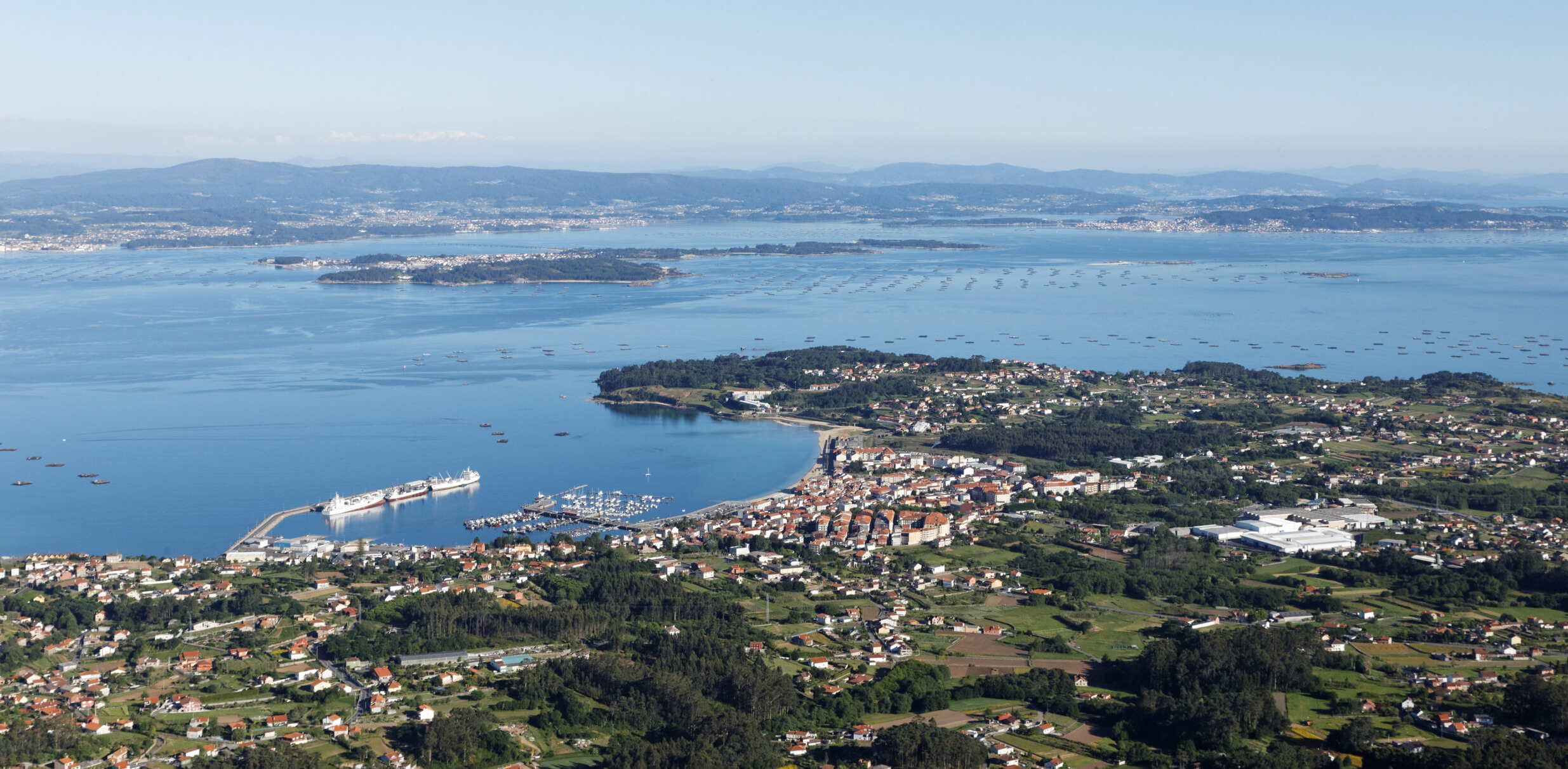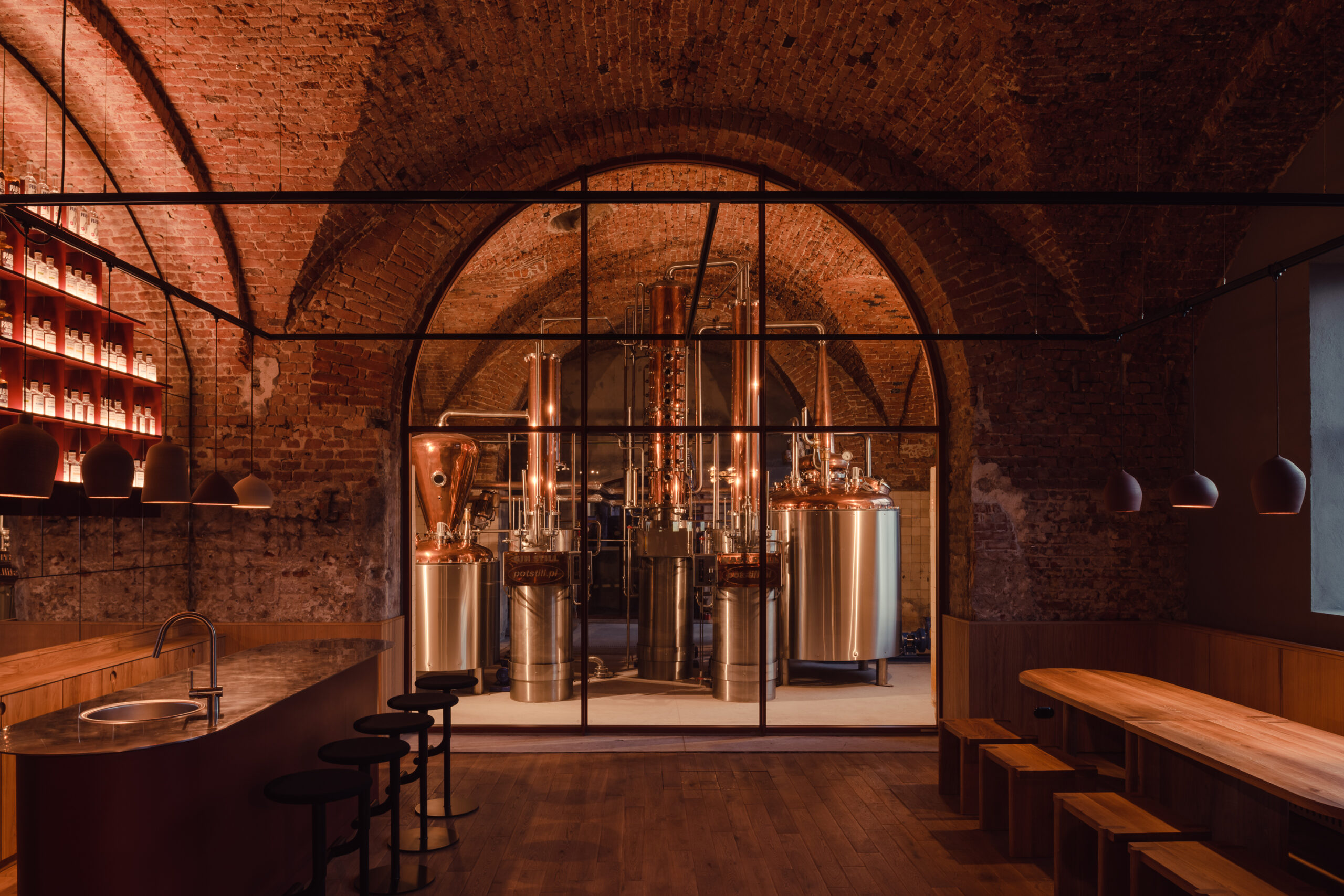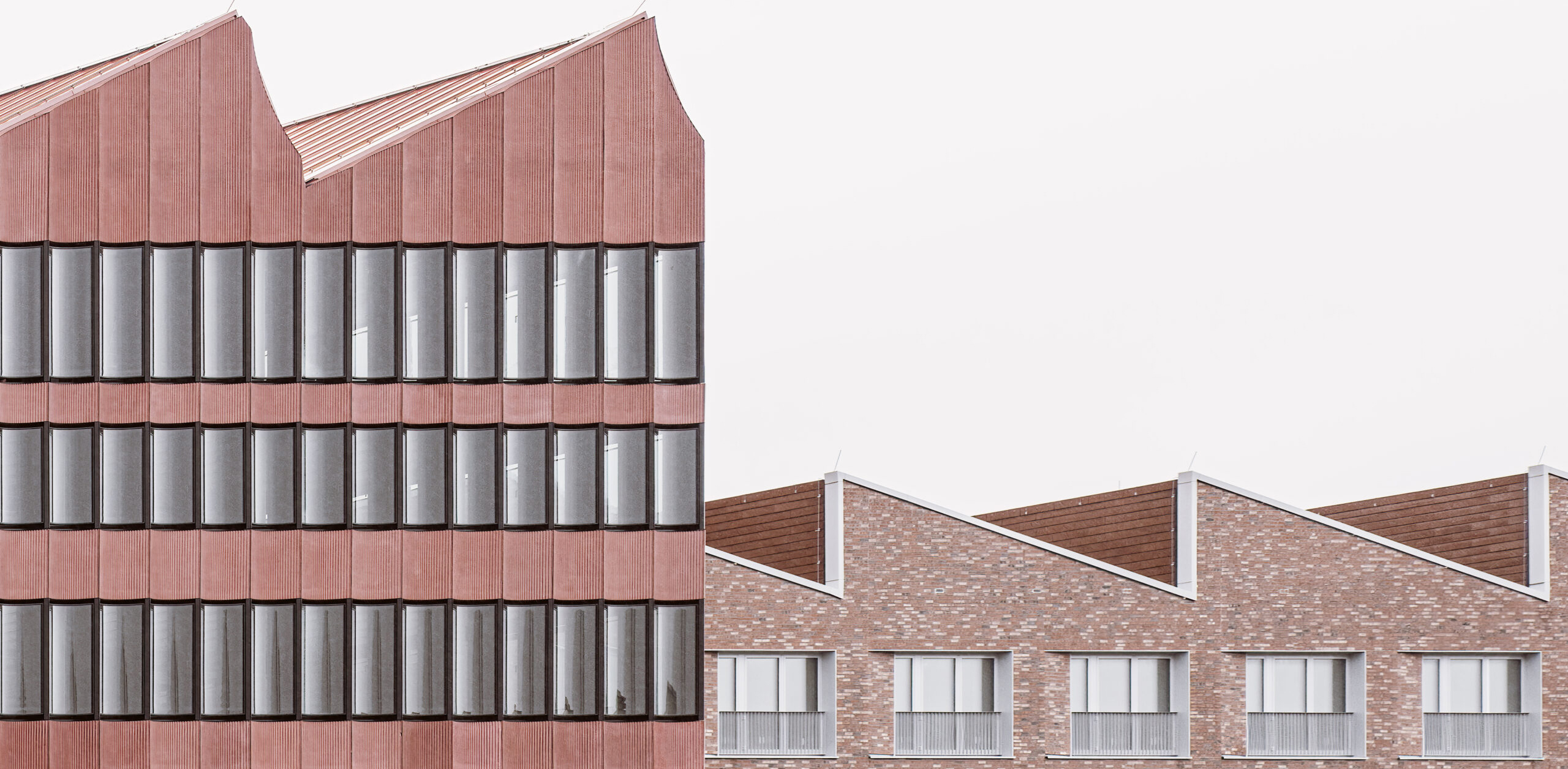Architects: Want to have your project featured? Showcase your work by uploading projects to Architizer and sign up for our inspirational newsletters.
It was a late summer evening on top of a roof terrace in downtown Athens, where a group of architects, artists and political scientists were discussing David Chipperfield’s new extension proposal for the National Archeological Museum, selected by the municipality a year prior, in 2023. Since then, the renowned architect has become a well-known name in the Athenian community, with his other projects, such as the Neues Museum in Berlin and the Procuratie Vecchie restoration in Venice, becoming examples of his architectural sensitivity towards cultural landmarks. Through the conversation, one thing was clear:
“We need a starchitect that understands and respects culture.”
Even though the term “starchitect” is problematic, the reasoning behind this particular phrase is quite strategic. David Chipperfield is a figure who convinces the never-changing, mistrusting Greeks that a piece of their cultural heritage lies in good hands, ready to undergo a makeover that will not only impact the museum itself but, more importantly, the immediate urban fabric that has been gradually deteriorating since the 2008 financial crisis.
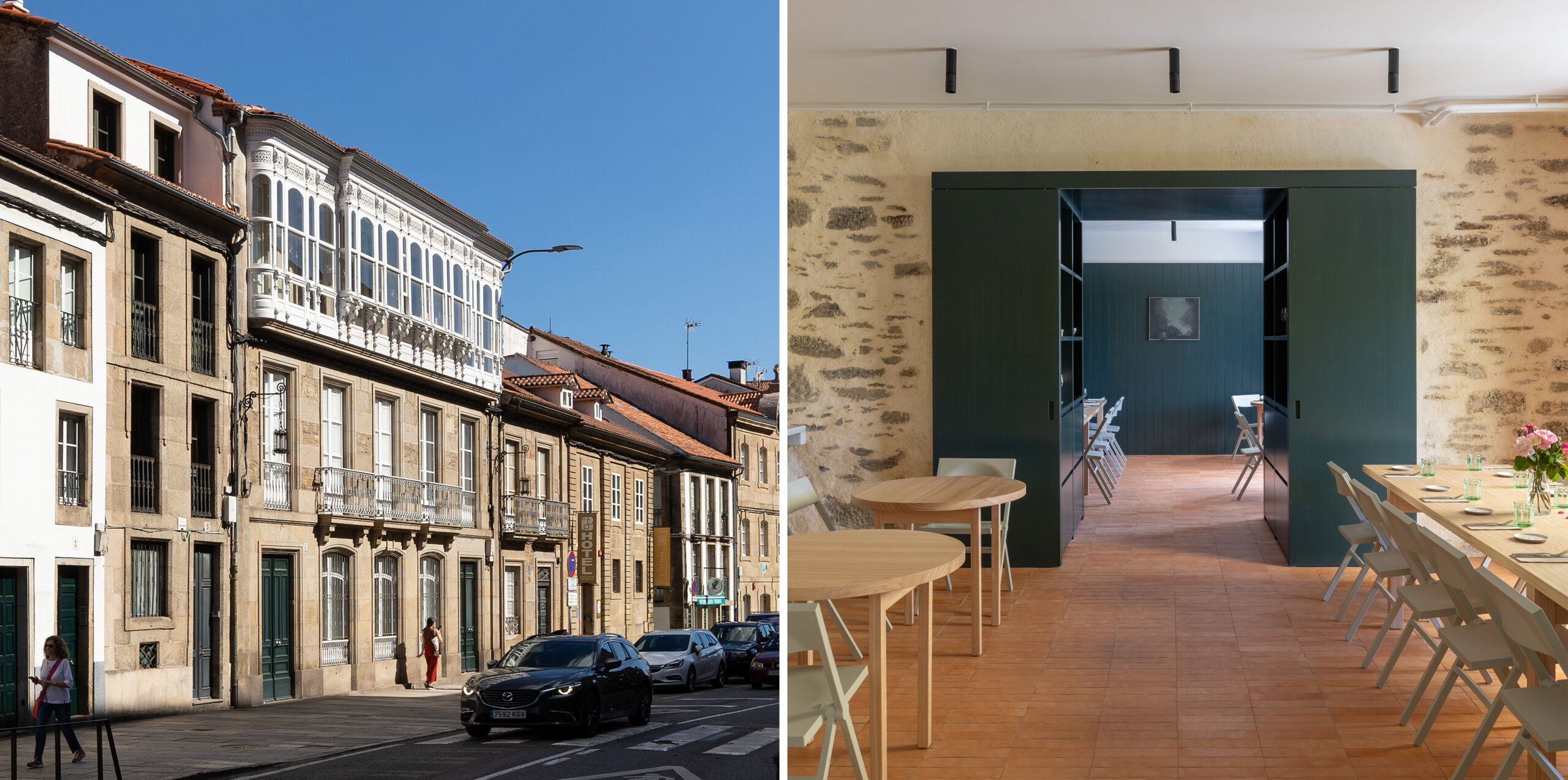
Left: Façade of Casa RIA, the new RIA headquarters in the historical centre of Santiago de Compostela | Right: A Cantina is the gastronomic space that supports the public programme of Casa RIA | Photos by Adrián Capelo
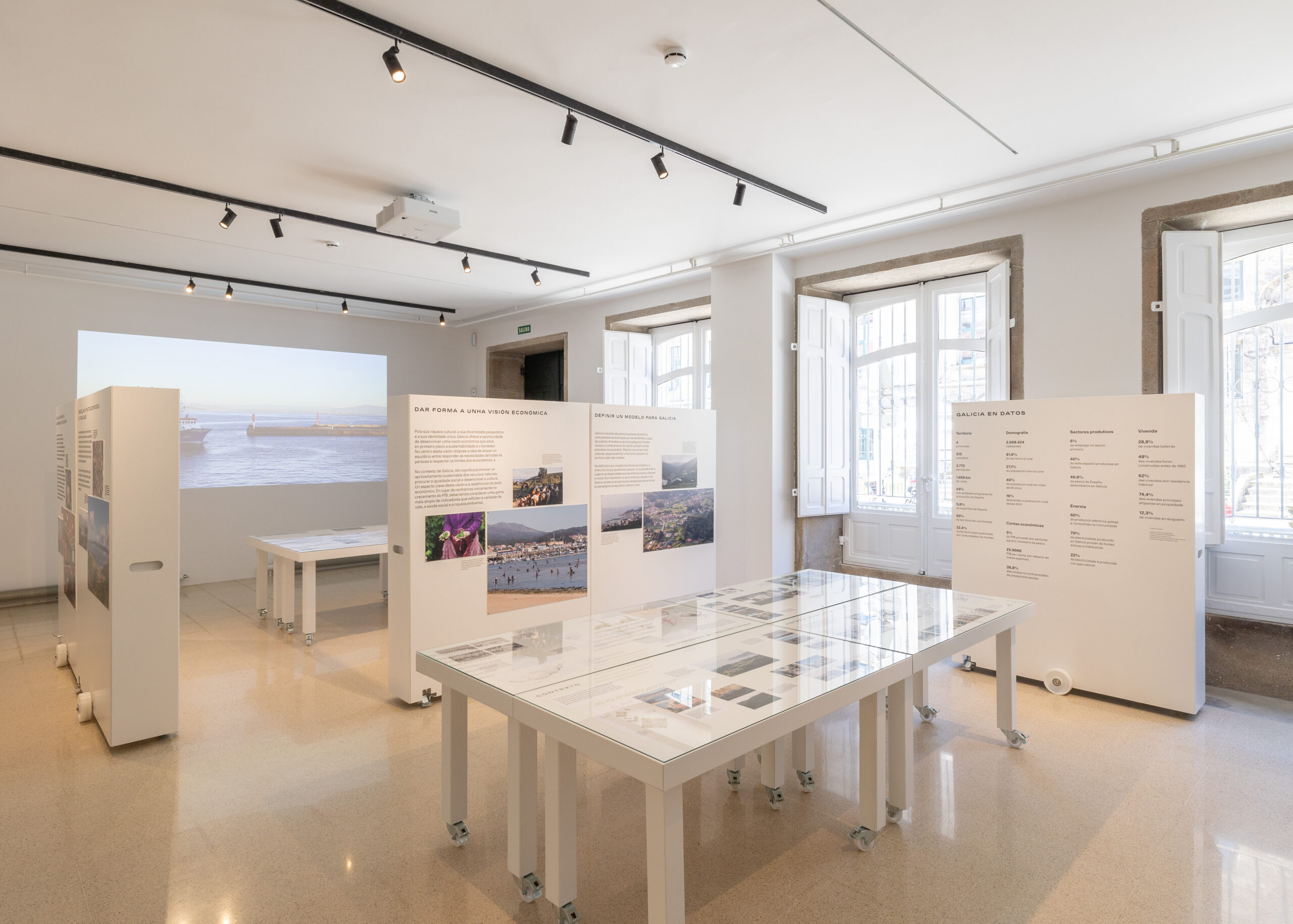
The Casa RIA exhibition space hosts temporary exhibitions aligned with RIA’s research areas | Photo by Adrián Capelo
It is not by chance that associating Chipperfield’s name with the particular project exuded a sense of confidence and relief. His optimistic approach is that architects need to become reengaged with society, environment and culture, tackling larger, more strategic and impactful projects and stop being mere ‘architectural decorators;’ a philosophy that led to his own research project situated in Galicia, Spain.
David Chipperfield’s relationship with the place started in 1990, when he built a holiday house. After almost two decades, the president of Galicia, Alberto Núñez Feijóo asked him whether he could help improve the region’s planning, stating that “the nature is spectacular and the towns are amazing in their essence, but they mess them up. They are modernized in the most horrible, brutal manner.”
As a result, the architect set up a research group named Fundación RIA in Santiago de Compostela, which acts as a non-profit independent agency that studies and develops territorial strategies for Galicia to preserve its natural and cultural heritage. The rest of the article presents two research projects and two reflection pieces written by David Chipperfield himself, discussing the area’s abundance in opportunity, where its natural landscape, culture and traditions hold the key to rediscovering and reappropriating the Galician local identity.
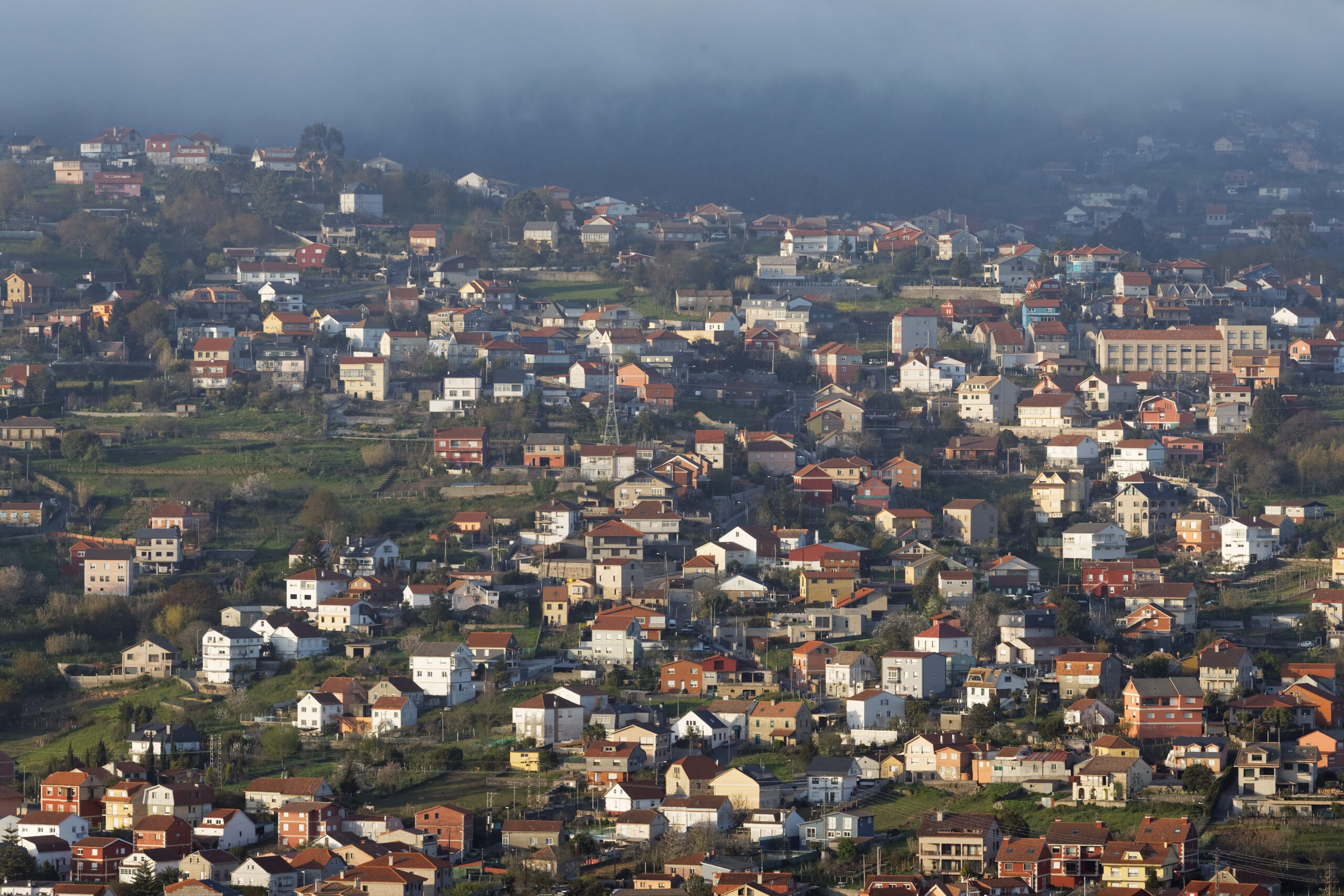
Urban sprawl in the surroundings of Vigo, the most populated city of Galicia | Photo by Adrián Capelo
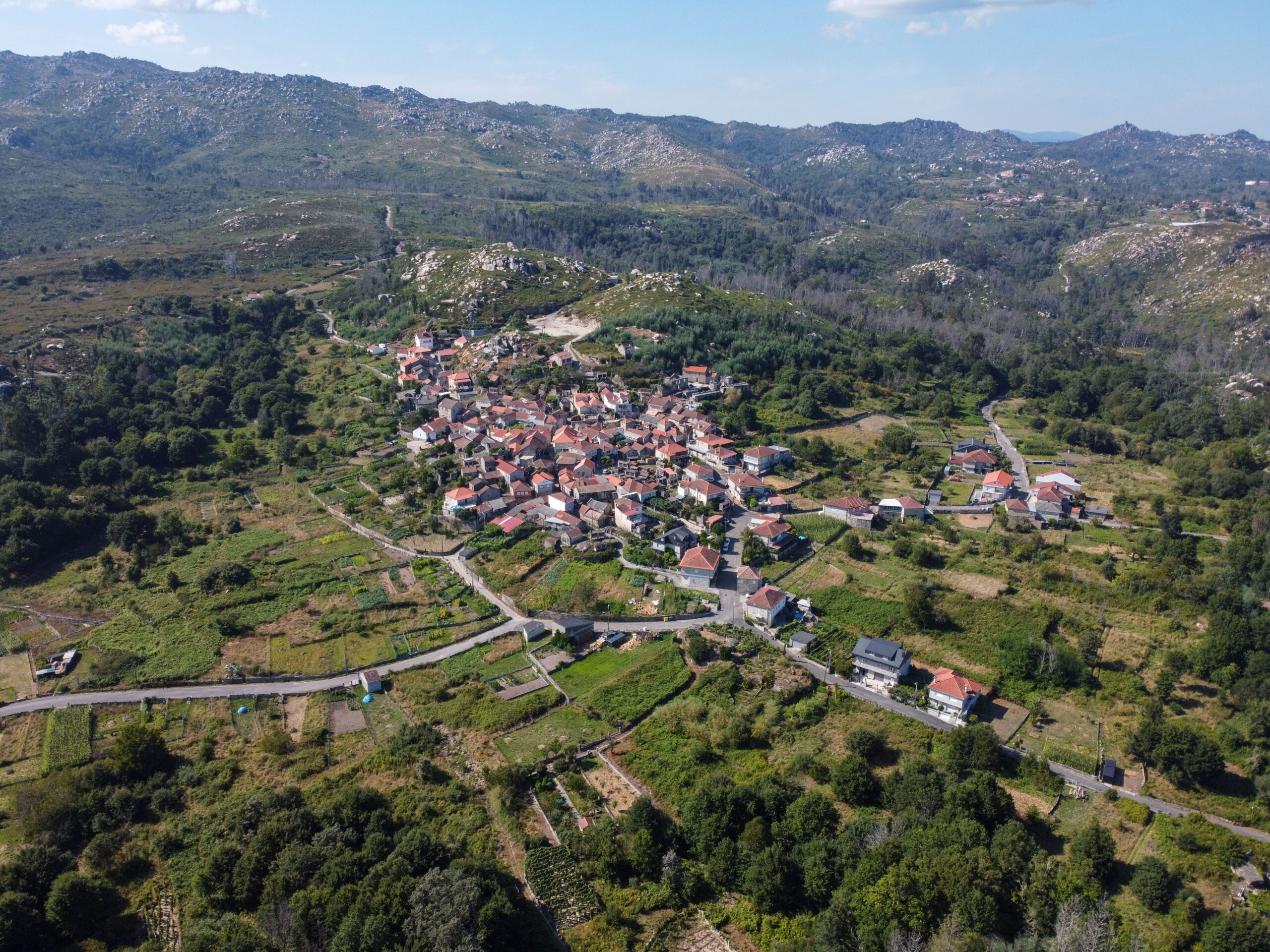
Revitalization plan for the model village of Muimenta, in collaboration with the regional government | Courtesy of Fundación RIA
1. Model villages
One initiative is the regeneration plans for the pilot model villages of muimenta and trascastro, which become architectural instruments that deal with the degradation of the productive, rural force of Galicia, due to population losses and the abandonment of land. Consequently, these model villages rehabilitate the buildings and public spaces, with the aim to attract new residences and reactivate the region’s productive force.
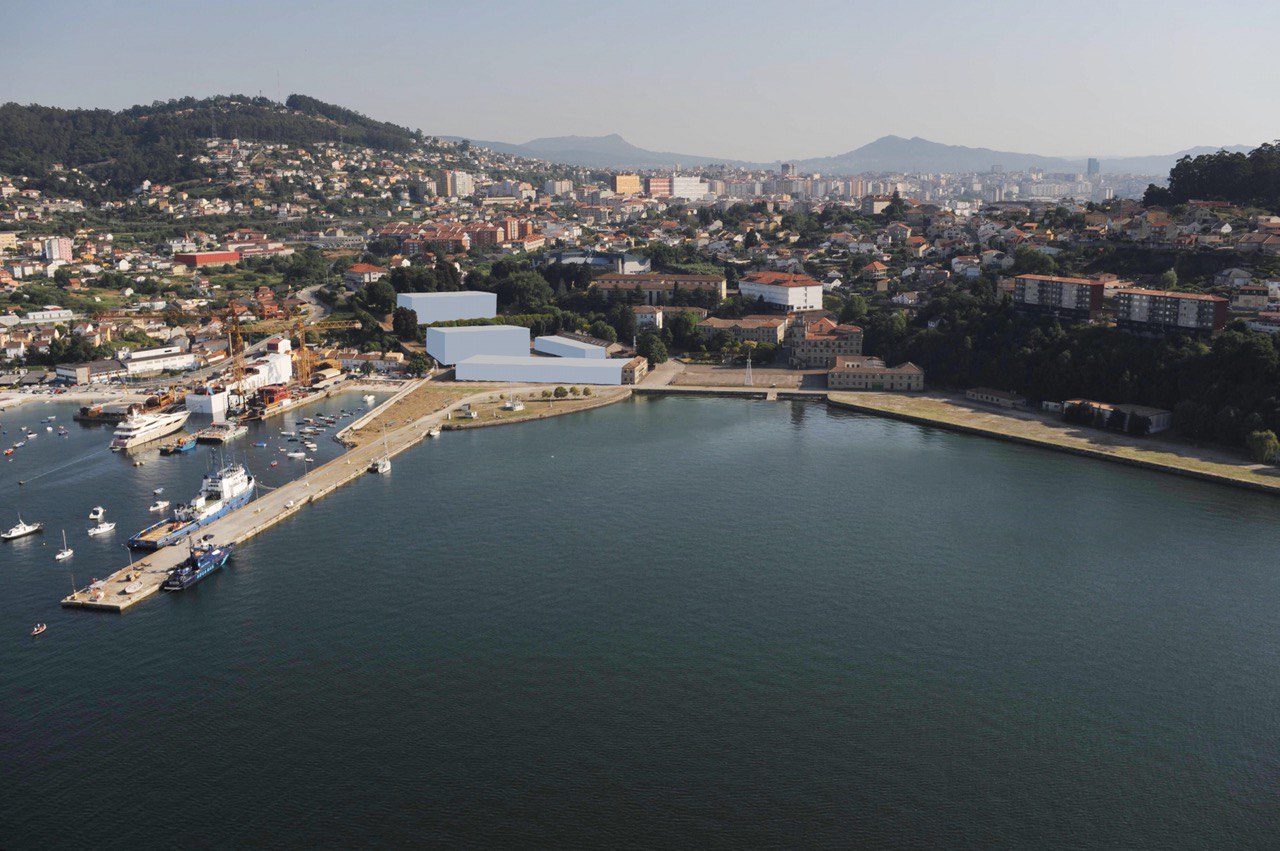
Layout for the future headquarters of the Marine Research Institute (CSIC) in Vigo | Courtesy of Fundación RIA
2. CISC marine research institute
This project develops the masterplan for the relocation of the Spanish institution of marine research center (IMM) to the former ETEA in Vigo, a marine research pole. The new location allows the IMM to grow to an impressive number of 350 employees as well as come in contact with other educational institutions such as the University of Vigo. This urban gesture essentially transforms the wider area into an international reference for marine research, promoting scientific progress and drawing up a planning proposal that integrates new buildings within the existing context, while responding at the same time to the programmatic needs of the IMM.
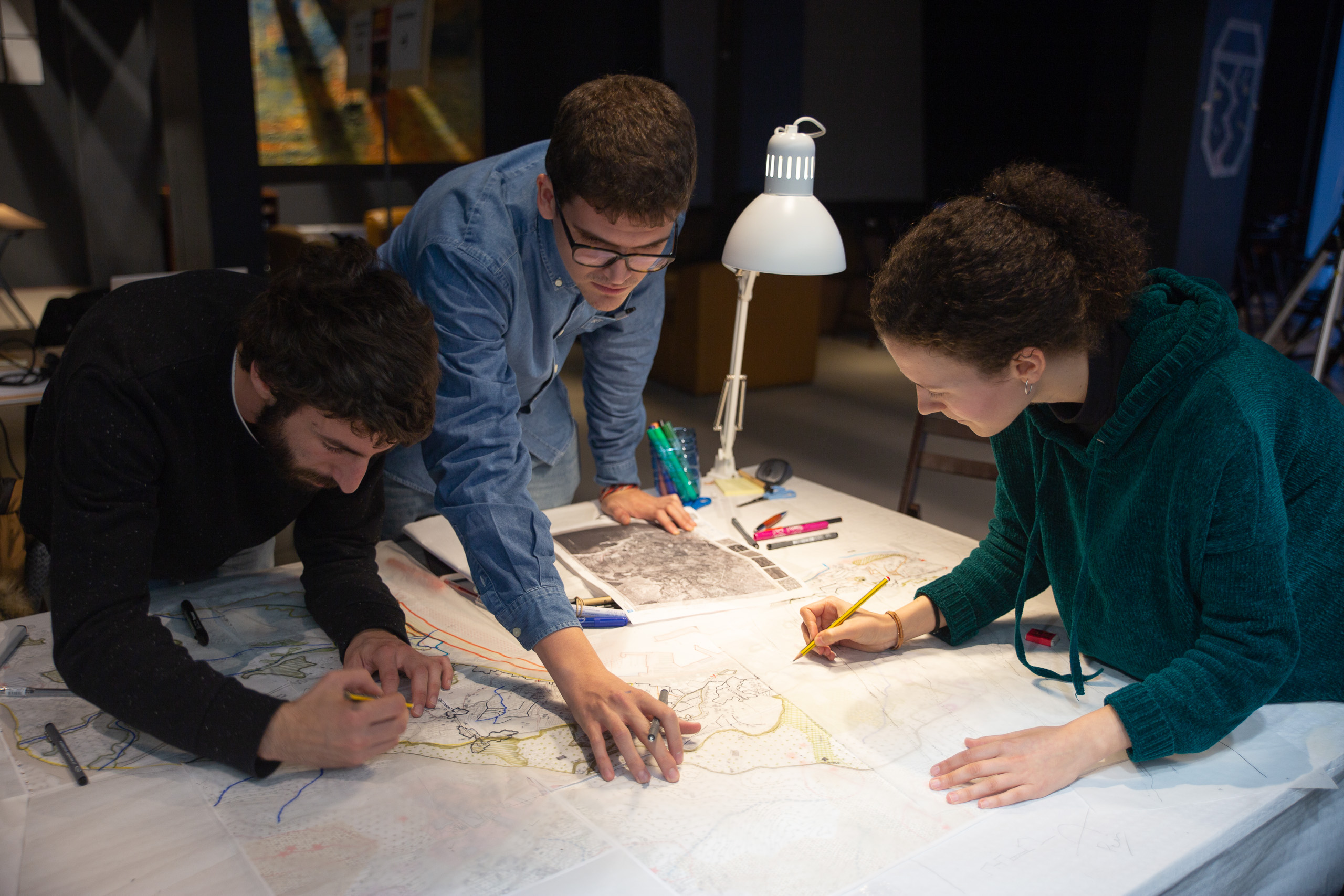
In addition to hosting multidisciplinary and participative processes, ‘Towards a territorial agenda for Galicia,” RIA hosts student workshops to engage young minds in hands-in learning and problem-solving | Photo by Adrián Capelo
The local newspaper La Voz de Galicia (the voice of Galicia) has been a crucial tool throughout the community’s redevelopment. Over time, David Chipperfield reflected upon a series of opinion articles presented through the paper that discuss the many issues Galicia — and by extent Fundación RIA — have to resolve.
3. Vamos a la calle
A fundamental challenge that had to be addressed was controlling the irregular planning and prioritization of cars and convenience over local heritage. Throughout the years streets were converted from social spaces into traffic highways, eradicating any sense of communal, public space. David Chipperfield writes ‘Over the last 40 years, Galician towns and cities have suffered a loss of identity as a result of poorly controlled development and the indiscriminate demolition of old buildings.’ He places great emphasis on the ‘public floor’, i.e. pavements and surfaces that create a sense of consideration and importance to the people that experience them.
Furthermore, Chipperfield praises the project of Porto do Son, completed in 2022 by CREUSeCARRASCO Arquitectos and rvr arquitectos, which not only regains the port’s public space but manages to do so through a series of collaborating efforts and the dissolution of frequently clashing interests amongst its residents and political parties.
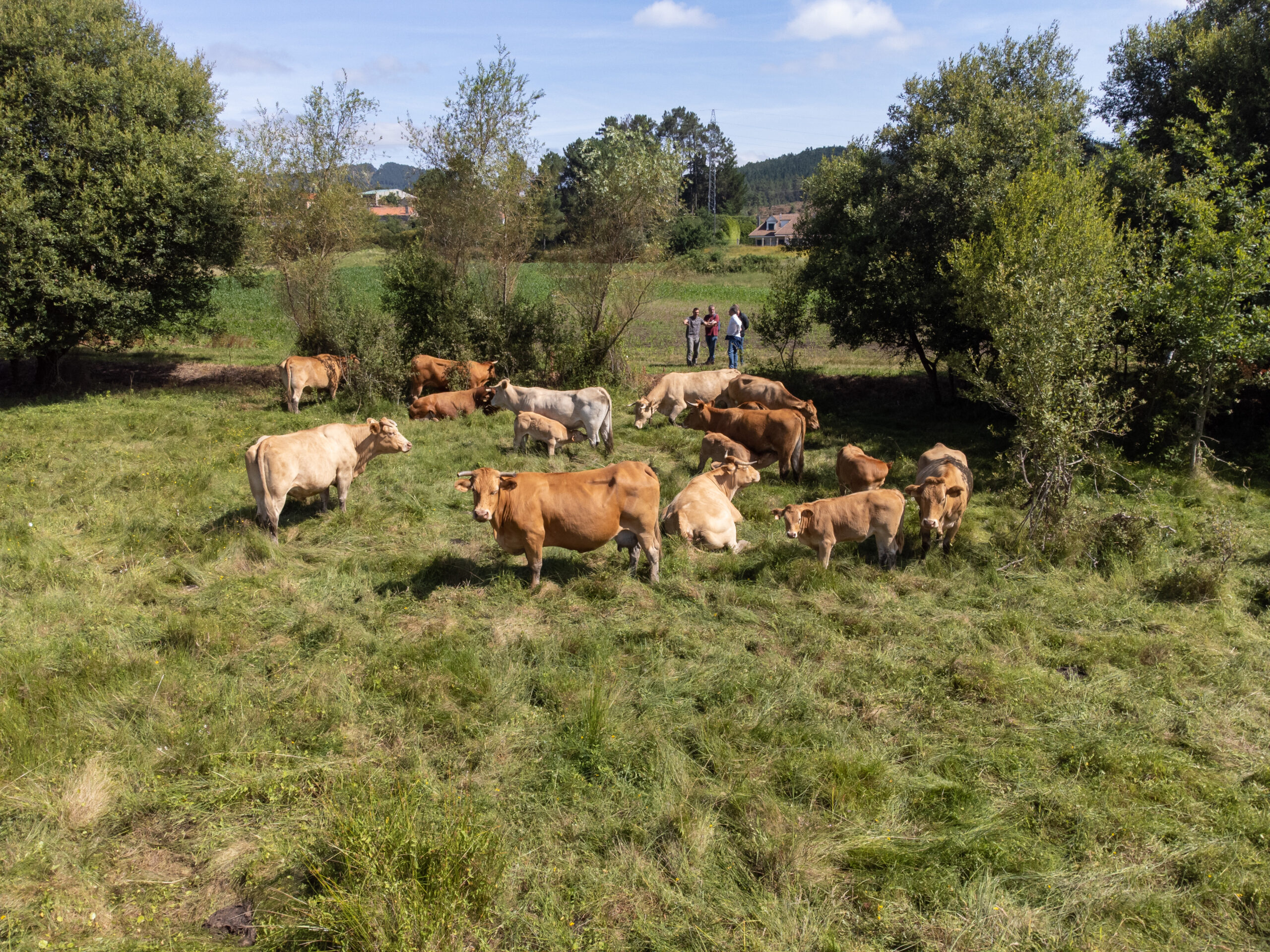
The foundation addresses sustainable land management, and Barbanza Ecosocial Lab is an action research project promoting sustainable local initiatives | Photo by Adrián Capelo
4. Galicia, land of opportunity
Finally, the architect reflects upon an opinion article that discusses concerns on global warming and how it greatly affects communities as well as the overall quality of life. Through his writing, he characterizes Galicia as a region that is more prepared to deal with climate change than other Spanish areas. Nature is embedded in the area’s way of life, through their traditional farming systems, and extended natural resource. It holds the infrastructure necessary, in which humans can work together with nature and explore ways of production and distribution that has no environmental impact.
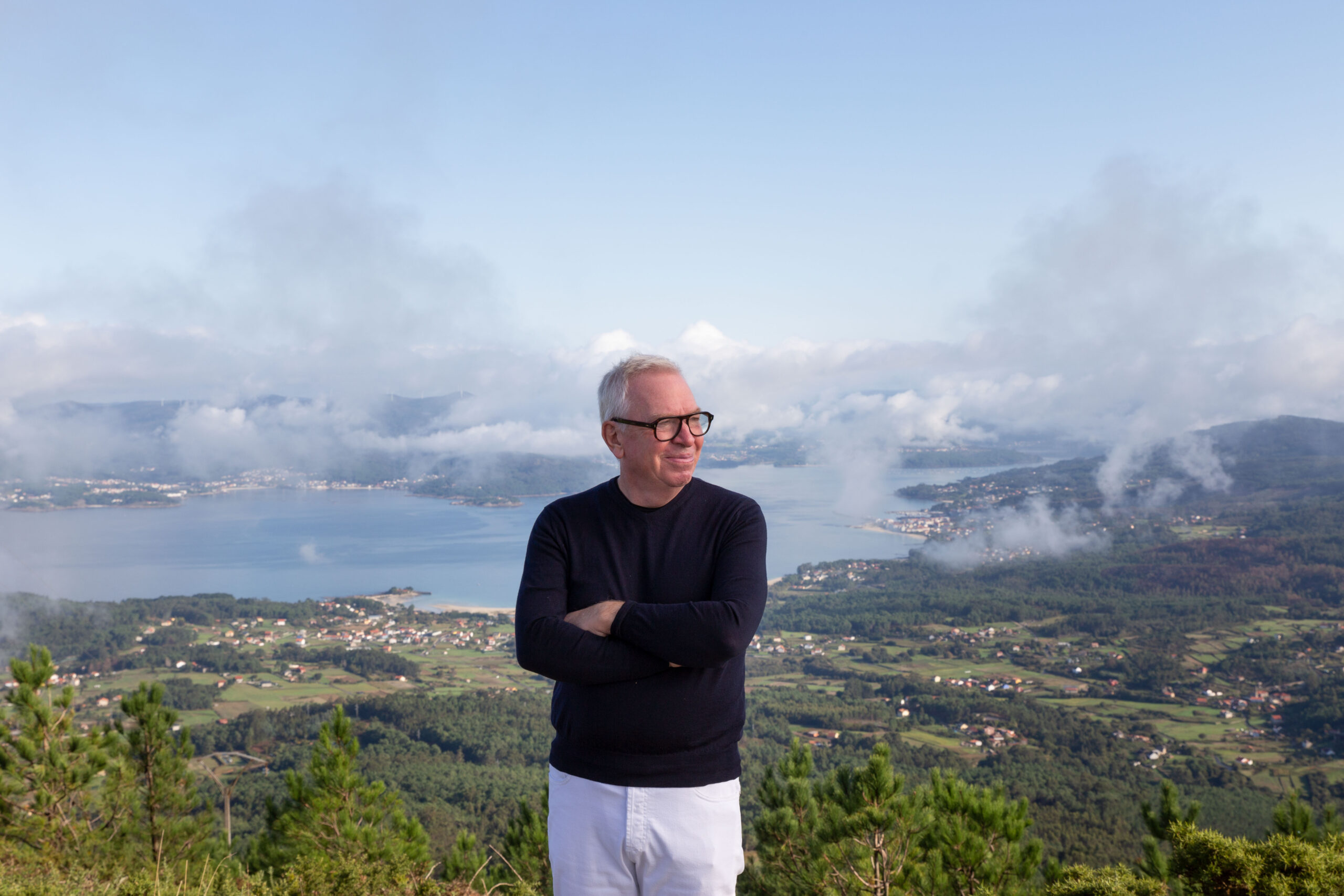
David Chipperfield in Galicia, with views of the Ría de Arousa | Photo by Adrián Capelo
Observing both the founder’s as well as the foundation’s research and actions, one notices that their ideas are intertwined. In both their work (written and visual) architecture — in its traditional sense — is given a backseat. Conversations on form, geometry, materials and spatial organization are replaced (in the case of the Galicia project) with discussions on management, marine biology and relocation of institutions and governing bodies, while inter-disciplinary studies, strategic decisions and a deep understanding of culture and local community are also the bread and butter in Chipperfield’s overall work.
Returning to the small community of Exarcheia in downtown Athens, where the National History Museum is located, it is not surprising that David Chipperfield has been such a “reassuring” choice for the wider architectural community: he is an architect who looks beyond aesthetics and is perfectly in tune with the context in which he designs. The Galicia project is an experiment not just for Chipperfield but for the global architectural community; fortunately, it seems to be succeeding and perhaps will pave the way for other architects to follow in its footsteps.
Architects: Want to have your project featured? Showcase your work by uploading projects to Architizer and sign up for our inspirational newsletters.
Top image: View of the Ría de Arousa, Galicia | Photo by Adrián Capelo
